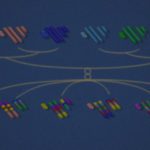Link to Pubmed [PMID] – 22090450
J. Infect. Dis. 2012 Jan;205(1):134-43
BACKGROUND: Although laboratory mice are usually highly susceptible to Yersinia pestis, we recently identified a mouse strain (SEG) that exhibited an exceptional capacity to resist bubonic plague and used it to identify immune mechanisms associated with resistance.
METHODS: The kinetics of infection, circulating blood cells, granulopoiesis, lesions, and cellular populations in the spleen, and cytokine production in various tissues were compared in SEG and susceptible C57BL/6J mice after subcutaneous infection with the virulent Y. pestis CO92.
RESULTS: Bacterial invasion occurred early (day 2) but was transient in SEG/Pas mice, whereas in C57BL/6J mice it was delayed but continuous until death. The bacterial load in all organs significantly correlated with the production of 5 cytokines (granulocyte colony-stimulating factor, keratinocyte-derived chemokine (KC), macrophage cationic peptide-1 (MCP-1), interleukin 1α, and interleukin 6) involved in monocyte and neutrophil recruitment. Indeed, higher proportions of these 2 cell types in blood and massive recruitment of F4/80(+)CD11b(-) macrophages in the spleen were observed in SEG/Pas mice at an early time point (day 2). Later times after infection (day 4) were characterized in C57BL/6J mice by destructive lesions of the spleen and impaired granulopoiesis.
CONCLUSION: A fast and efficient Y. pestis dissemination in SEG mice may be critical for the triggering of an early and effective innate immune response necessary for surviving plague.






